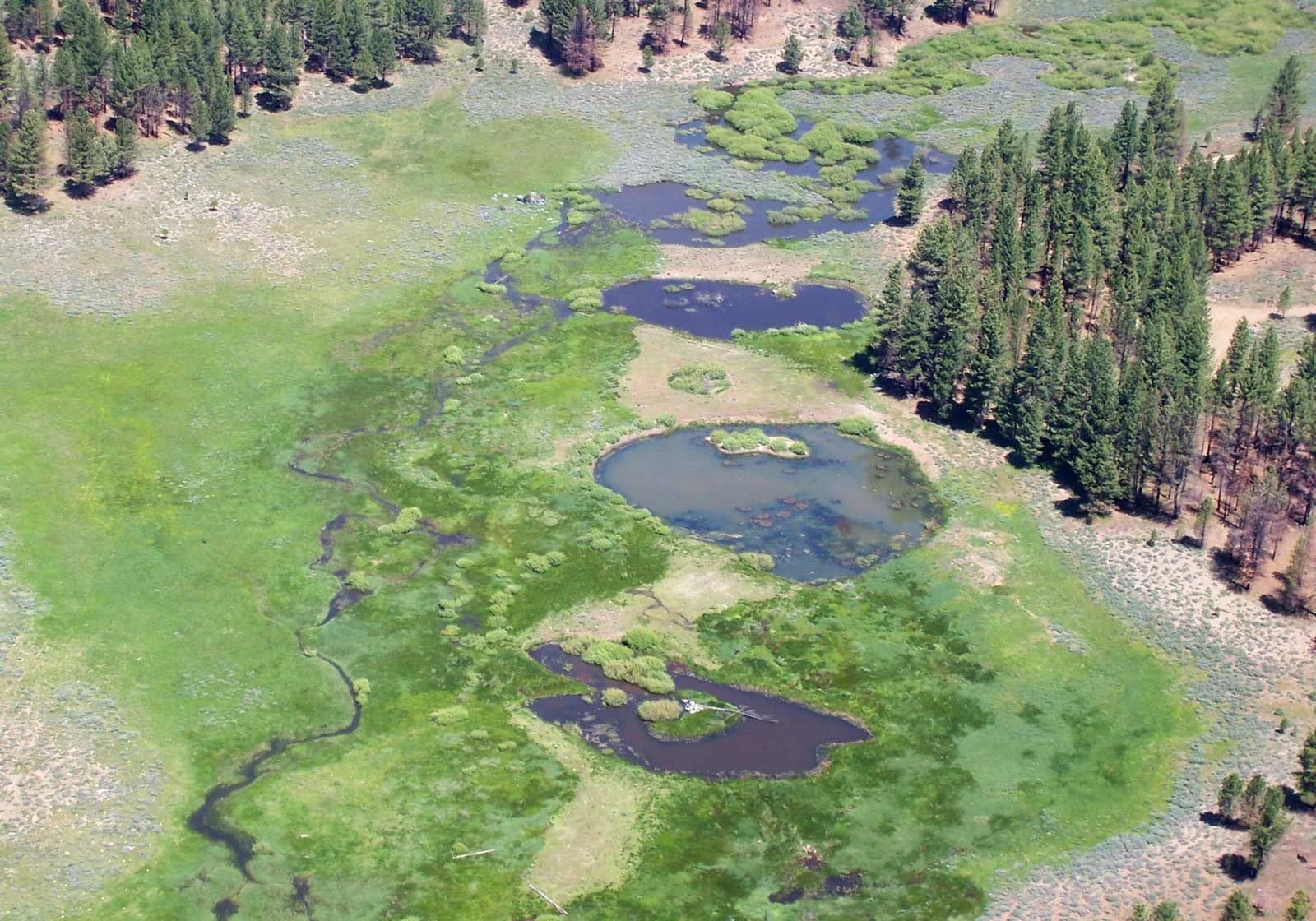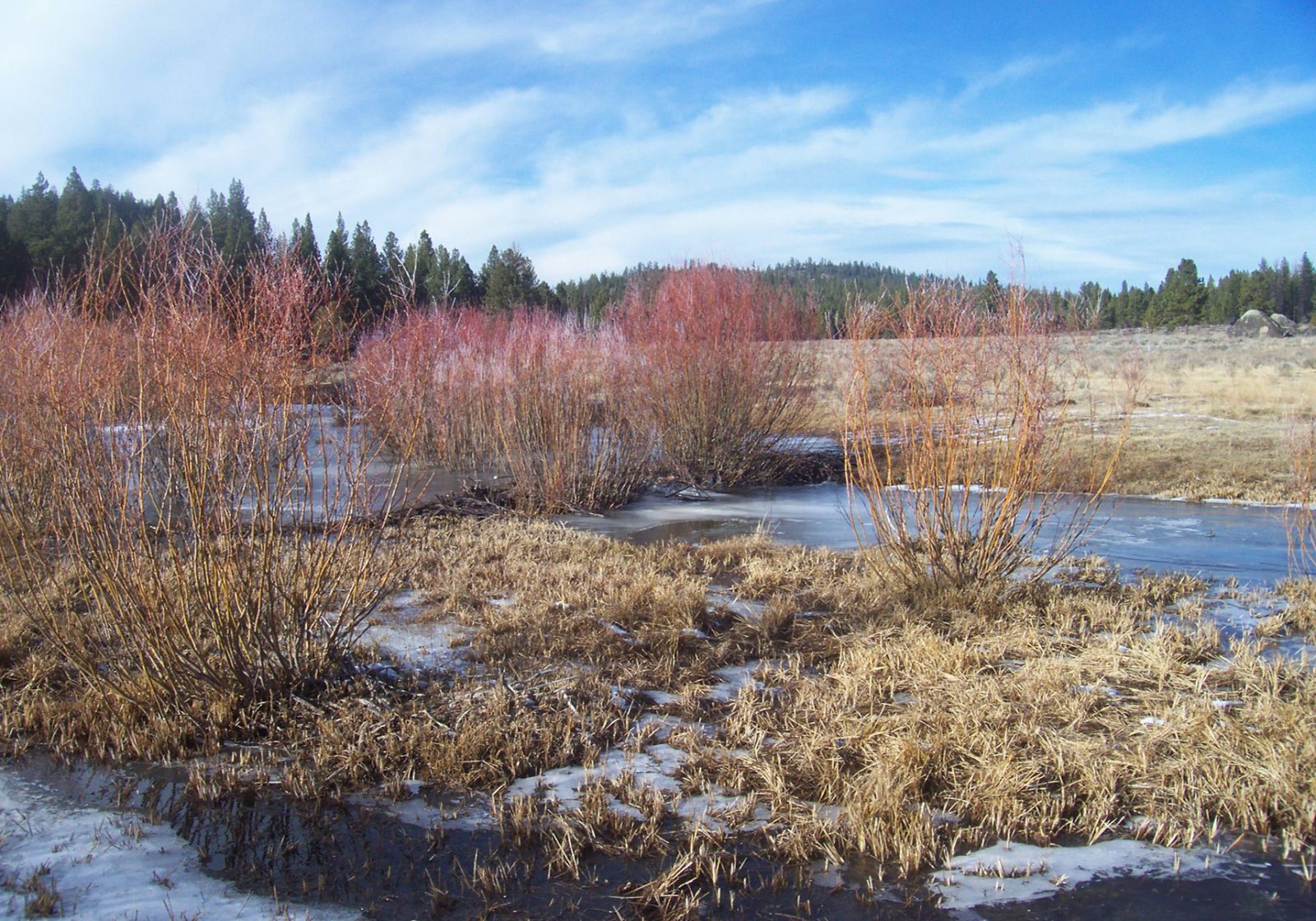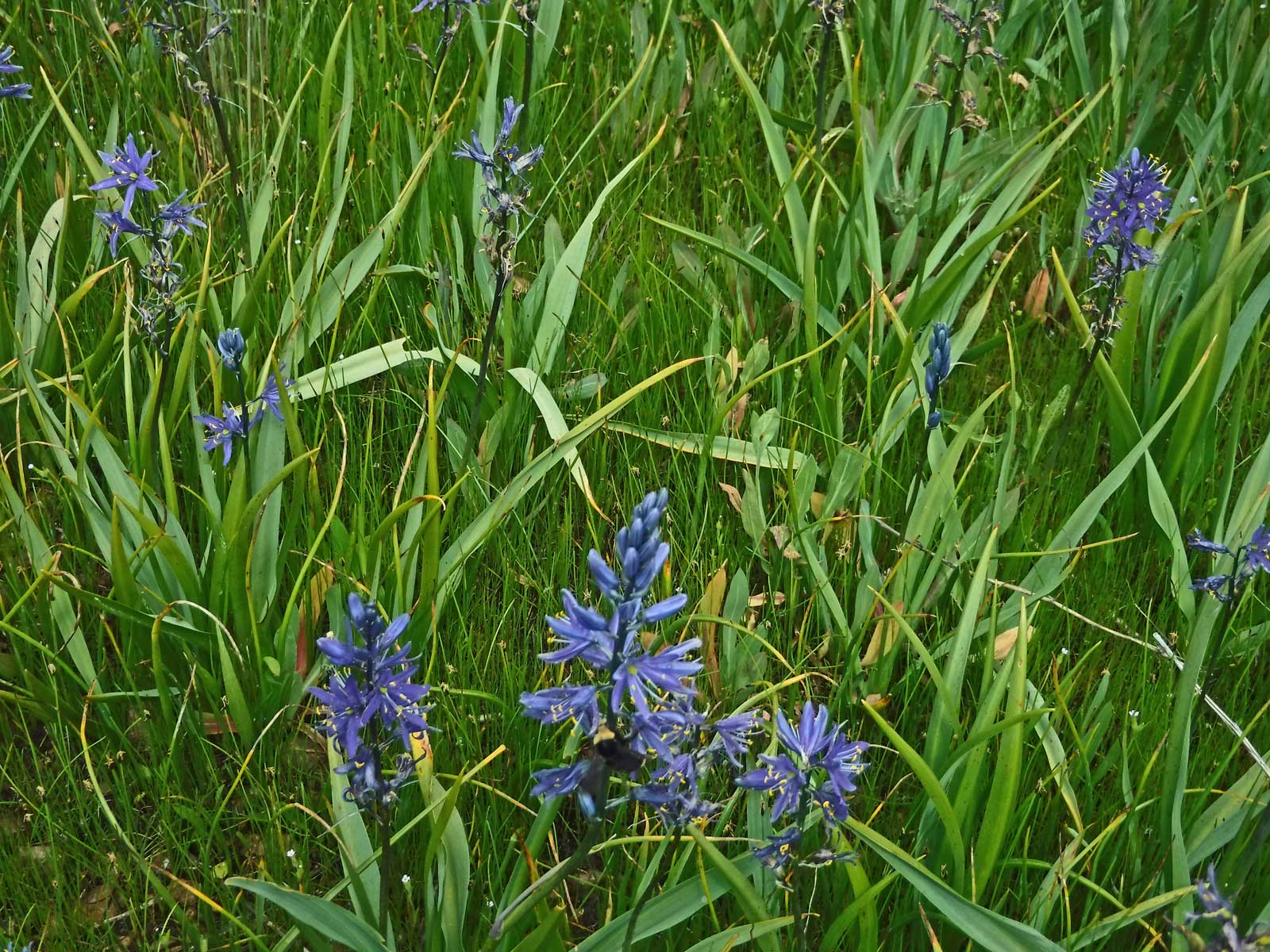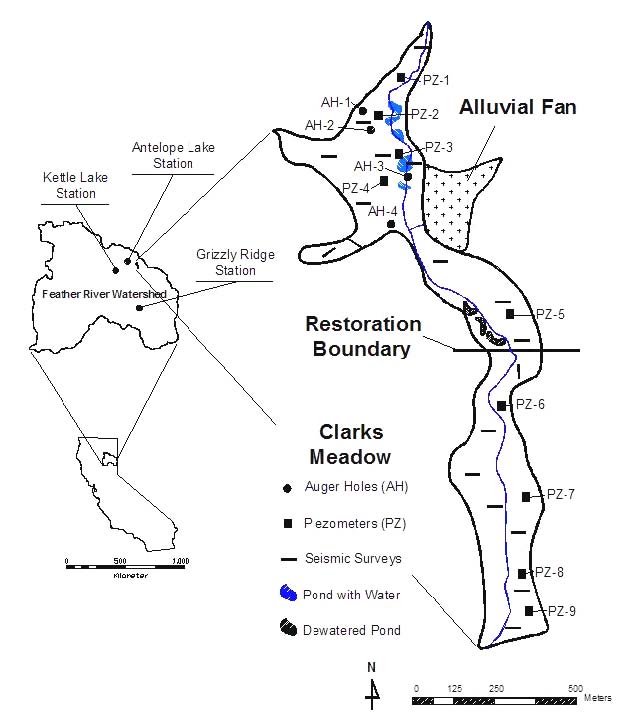The Clarks Creek project is on Plumas National Forest, and was a collaborative project with the Feather River Coordinated Resource Management group partners.
Constructed in 2001, the project eliminated 4,300 feet of incised stream channel with pond and plug (now referred to as partial fill), reconnecting the remnant meadow channels with 50 acres of meadow floodplain. The Forest Service grazing permittee at the time completed a new pasture fence in September of 2001. Not all of the project area was fenced in order to evaluate recovery of the site with and without grazing. However, cattle did get in the exclosure off and on after the project was completed. The fence was removed from the project area in the spring of 2010. Monitoring on Clarks Creek included thorough pre-project wildlife and fish monitoring both in the project area and in a similar un-restored control area downstream by California Department of Water Resources (DWR). The meadow was also part of a groundwater storage study conducted by California State University Sacramento. See report link below.





Wildlife
DWR repeated the wildlife surveys in 2002, 2003, and 2004 for post-project data. Results of the Clarks Creek fish and wildlife monitoring showed a statistically significant increase in avian species diversity and richness. Density of small mammals made a slight increase, but was not statistically significant. Deer and waterfowl also showed a slight increase in use post restoration, but not statistically significant. Fish recolonization of both the project and control areas was not seen post project. Fish passage and recolonization could of been impaired by beaver dams downstream.
The project was funded by Plumas County’s Proposition 204 Indian Creek Watershed Project grant. Major partners were Plumas National Forest, Plumas County, DWR, grazing permittee Doug Robbins, the California State Water Resources Control Board, and the Regional Water Quality Control Board.
Lack of significant vegetative recovery in the first three years following project construction probably contributed to the low waterfowl production and use and only slight increases in small mammals. Follow-up fish and wildlife monitoring has not been conducted since 2004. In 2009 and 2010, both the restored and un-restored reaches of Clarks Creek were monitored for avian species as part of a PRBO Conservation Science songbird monitoring study in the Northern Sierras. On-going monitoring includes aerial and ground photography.


